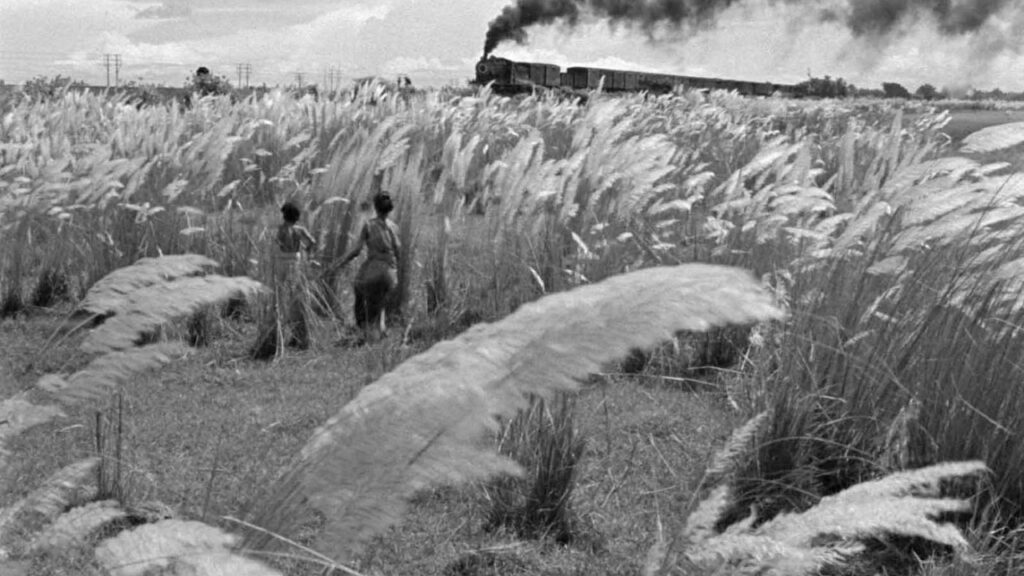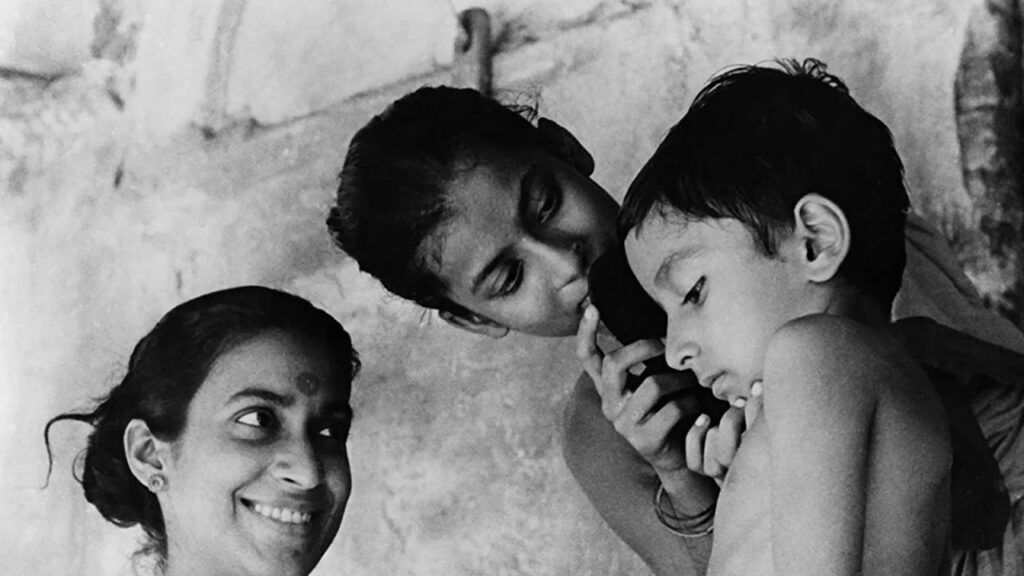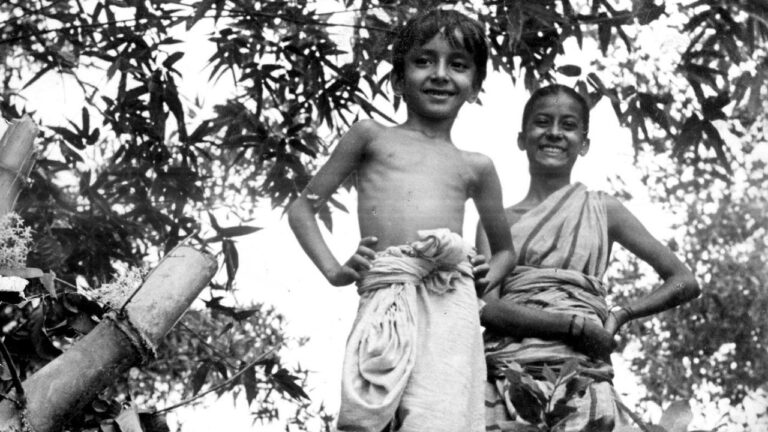When ‘Pather Panchali‘ premiered in 1955, few could have predicted that a modest Bengali film, shot with non-professional actors and financed in part by loans and government support, would become a cornerstone of world cinema. Yet Satyajit Ray’s debut did exactly that. Even after seventy years later, its beauty lies not only in its historical importance but in its enduring ability to move audiences through craft, restraint, and deep human sympathy.
Based on Bibhutibhushan Bandyopadhyay’s 1929 novel, the film tells the story of a poor Brahmin family living in rural Bengal. We see Sarbajaya, played by Karuna Banerjee, who is a weary mother, and bears the weight of holding the household together. Her husband, Harihar, portrayed by Kanu Banerjee, dreams of a literary career but can never provide enough. Their daughter Durga (Runki Banerjee) is mischievous in nature, and her warm relationship with her younger brother Apu (Pinaki Sengupta) is an innocent complicity. Around them drifts Indir Thakrun (Chunibala Devi), who is an elderly relative, and her frailty, as well as her humor, anchor the family to the past. Nothing in the story is sensational, as its power comes from the way Ray captures ordinary life, where joy and grief emerge from the same soil.
Satyajit Ray’s Neorealist Lens Finds Universality in the Smallest Details

Ray’s decision to shoot on location was both practical and artistic. With little money, he filmed in real villages, using natural light and actors drawn largely from outside the film industry. This approach was made by the Italian neorealist films that had inspired Ray, especially Vittorio De Sica’s Bicycle Thieves. Like those works, Pather Panchali focuses on the dignity of the poor, finding universality in the smallest details, such as a rusted cooking pot, a cracked wall, or a sibling’s laughter, all of which become moments of revelation.
One of the film’s most famous sequences is deceptively simple, as we see Apu and Durga run through a field of tall kaash flowers to glimpse a passing train. The children’s joy is palpable, yet the scene resonates beyond its literal action. The train, which is a symbol of modernity and escape, slices through the timeless rural landscape. For Apu, it hints at a world beyond the village, and for us, it marks the delicate balance between wonder and longing that defines their childhood. The scene is staged with no overt commentary, which lingers as one of cinema’s most sophisticated images of discovery.
Equally unforgettable is the monsoon sequence, where we see rain pouring through the village, and children are playing. But within this celebration of nature lies a devastating peril. Durga falls ill after soaking in the downpour, and soon she is gone. Her death is not dramatized with spectacle, because Ray shows us Sarbajaya’s quiet collapse and Apu’s stunned silence. The restraint heightens the grief, and the absence of melodrama makes the loss all the more hurtful.
The final passages of the film return to the theme of departure. Harihar comes home with gifts and good news, only to collapse when he learns Durga is dead. Soon after, the family packs their belongings and leaves the ancestral house, heading toward an uncertain future. Apu glances back at the home they are abandoning, a moment heavy with both grief and possibility. It is a quiet ending, but one that affirms the continuity of life even in the face of devastating loss.
Karuna Banerjee’s Quiet Power and Ravi Shankar’s Evocative Score Anchor the Film’s Emotion

The film’s emotional weight is the performance of Karuna Banerjee, as her face, often tight with suppressed frustration, conveys both strength and vulnerability. She scolds her children, quarrels with Indir, and worries about money, yet her love is undeniable. When she breaks down after Durga’s death, it is as if all the tensions of poverty, motherhood, and disappointment erupt in a single moment.
The role of music cannot be overlooked. Ravi Shankar’s sitar compositions, recorded in a brief period of studio time, provide a score that is as economical as it is evocative. Rather than dominate the film, the music punctuates it, as it is a playful riff while we see the children wander, or during a mournful strain in the wake of tragedy. Often, Ray relies on silence, letting natural sounds carry the scene. This sparing use of music allows emotion to rise organically, rooted in the images themselves.
Nearly seven decades on, the film retains its freshness. Its textures, of showing us the sound of bamboo swaying, the sight of children racing barefoot, the stillness of a mother’s grief, remain natural and devastatingly vivid. What makes Pather Panchali extraordinary is its refusal to exaggerate. Ray does not ask us to pity his characters or to view them as noble martyrs. He shows them as they are, and in doing so, he elevates their everyday struggles into something universal.




